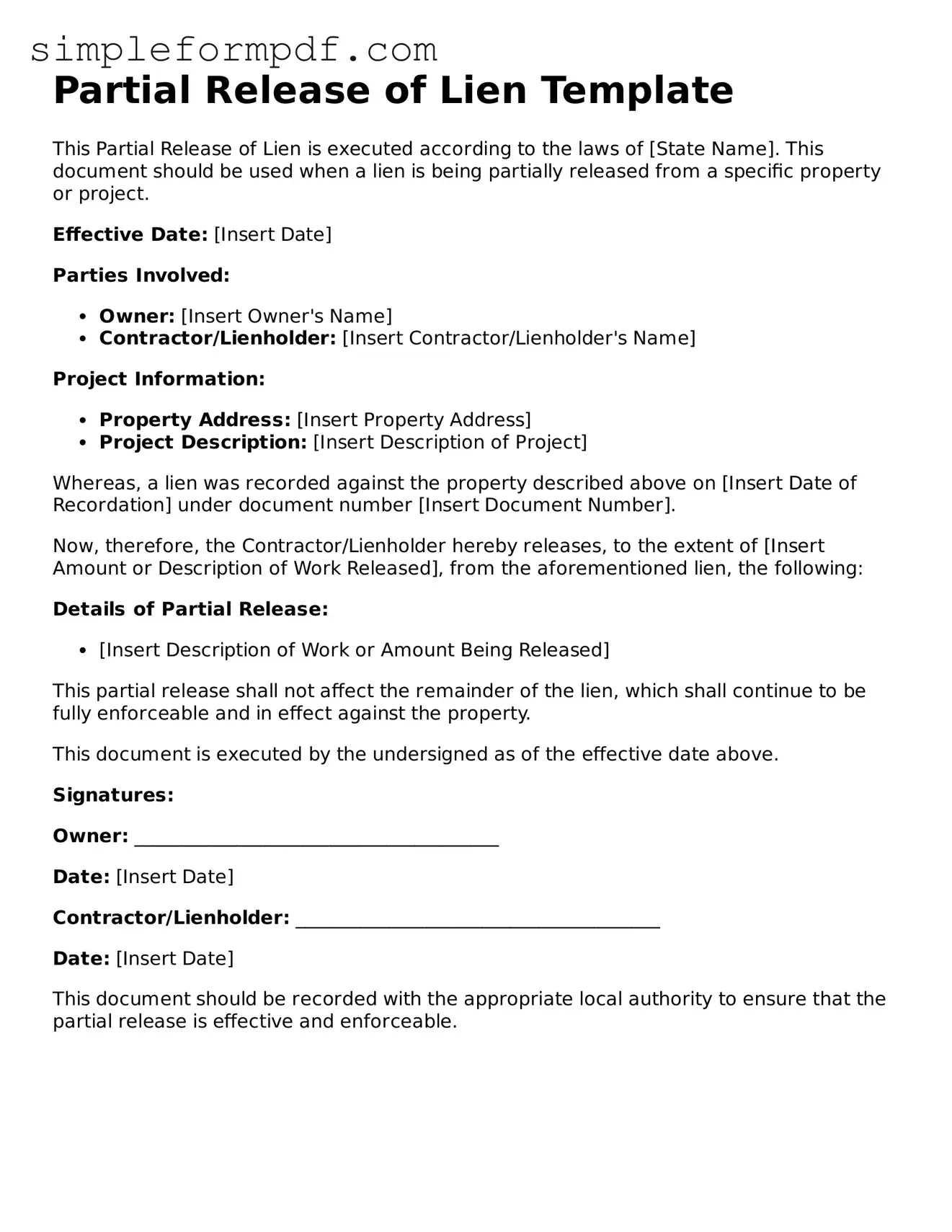Partial Release of Lien Template
This Partial Release of Lien is executed according to the laws of [State Name]. This document should be used when a lien is being partially released from a specific property or project.
Effective Date: [Insert Date]
Parties Involved:
- Owner: [Insert Owner's Name]
- Contractor/Lienholder: [Insert Contractor/Lienholder's Name]
Project Information:
- Property Address: [Insert Property Address]
- Project Description: [Insert Description of Project]
Whereas, a lien was recorded against the property described above on [Insert Date of Recordation] under document number [Insert Document Number].
Now, therefore, the Contractor/Lienholder hereby releases, to the extent of [Insert Amount or Description of Work Released], from the aforementioned lien, the following:
Details of Partial Release:
- [Insert Description of Work or Amount Being Released]
This partial release shall not affect the remainder of the lien, which shall continue to be fully enforceable and in effect against the property.
This document is executed by the undersigned as of the effective date above.
Signatures:
Owner: _______________________________________
Date: [Insert Date]
Contractor/Lienholder: _______________________________________
Date: [Insert Date]
This document should be recorded with the appropriate local authority to ensure that the partial release is effective and enforceable.
